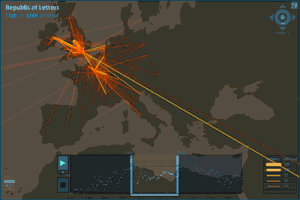Nineteenth-Century Art Worldwide & Digital Humanities
Call for Papers: Digital Humanities Research and Publication in NCAW
 Nineteenth-Century Art Worldwide has received a grant from the Mellon Foundation for a three-year capacity-building initiative to maximize the possibilities of the journal electronic delivery. With this in mind, NCAW is soliciting potential articles that take full advantage of new web technologies either in the research or the publication phase, or both. The Mellon grant is intended to help authors in the development phase of their articles as well as to aid NCAW in the implementation phase. NCAW is seeking scholarship that engages in one or more of the following, interrelated areas of investigation:
Nineteenth-Century Art Worldwide has received a grant from the Mellon Foundation for a three-year capacity-building initiative to maximize the possibilities of the journal electronic delivery. With this in mind, NCAW is soliciting potential articles that take full advantage of new web technologies either in the research or the publication phase, or both. The Mellon grant is intended to help authors in the development phase of their articles as well as to aid NCAW in the implementation phase. NCAW is seeking scholarship that engages in one or more of the following, interrelated areas of investigation:
– Data Mining and Analysis:
Use of data analytics programs (e.g., SEASR, Network Workbench) to investigate connections among particular groups or individuals, such as artists, writers, art dealers, art markets and other networks of exchange (social networks)
See for example « Mapping the Republic of Letters, » produced by researchers and technologists at Stanford University:
https://republicofletters.stanford.edu/
– Geographic Information Systems (GIS) and Mapping:
Use of maps in concert with data sets (e.g., depictions of sites, location of objects, paths of travel) in order to investigate and communicate change over time and space
The website for the project « Imago Urbis: Giuseppe Vasi’s Grand Tour of Rome » (http://vasi.uoregon.edu/index.htm), for example, links Giambattista Nolli’s 1748 map of Rome with vedute created by Vasi, providing insight into the vedutismo tradition as well as the urban development of Rome in the eighteenth century.
– High-Resolution imaging and dynamic image presentation:
Use of panoramic and/or high-resolution imagery to view, for example, panoramas, conservation images (x-ray, infrared reflectography), moving images
– The QTVR panoramas of world architecture produced by ColumbiaUniversity,
(http://www.artstor.org/what-is-artstor/w-html/col-qtvr-columbia.shtml)
are an example of the kind of image viewing interface that could be used in support of scholarship on, for example, panorama paintings or large-scale architectural installations
Authors are not expected to have extensive technical expertise themselves; instead NCAW will work with them to help in realizing the computing aspects of their project. Authors should, however, be generally knowledgeable about the technological possibilities related to their project and should be able to articulate how both specific computer-based research methods and the online publication format connect with the research questions on which their project focuses. In addition, authors should expect to collaborate with technical experts on the realization of their projects. To this end, proposals which give some indication of how authors envision working with such experts, or which identify specific collaborative partners will be preferred.
Finally, proposals should outline projects which are relatively small-scale, able to be realized within a time span of about three to six months and requiring around 100 hours of development work.
Interested contributors are asked to submit a 500-word abstract that describes the author’s (or authors’) project and explains how it fits within the areas described above and why advanced computing technologies are necessary for conducting this research and/or for presenting the resulting scholarship. In addition, they are asked to provide a short CV and a budget. For further information or to submit an application for funding, email to Petra Chu, petra.chu[at]shu.edu, and Emily Pugh, emily[at]emilypugh.com.
Reference <http://arthist.net/archive/2831>.

Leave a Reply
You must be logged in to post a comment.